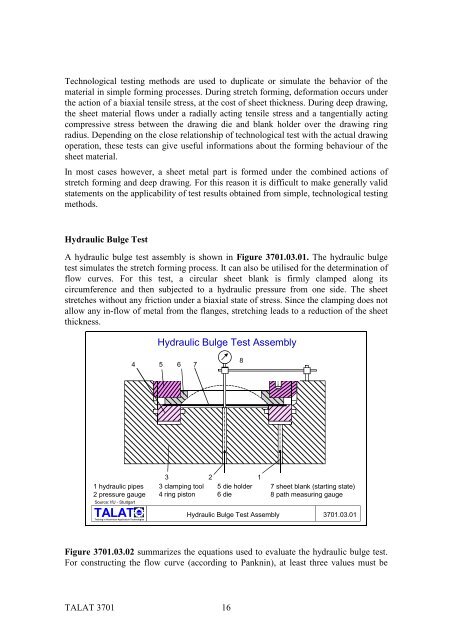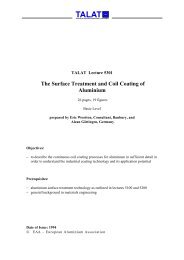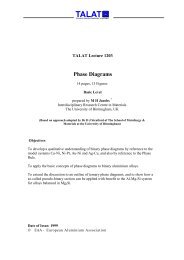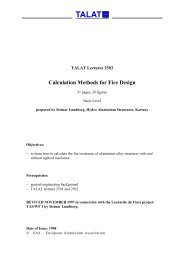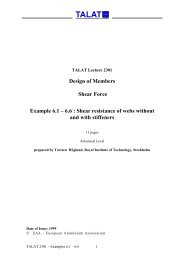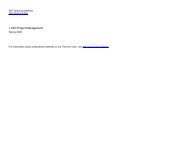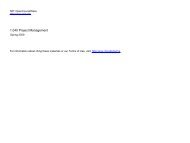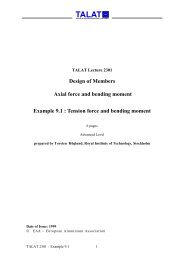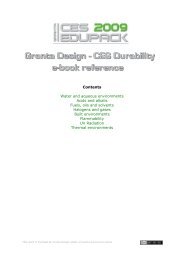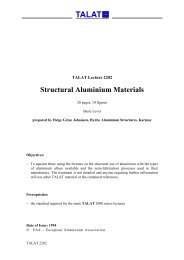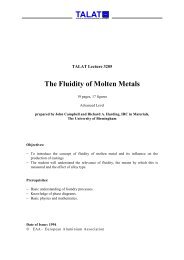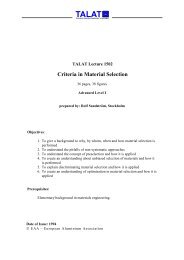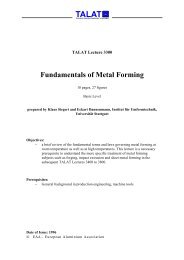Formability Characteristics of Aluminium Sheet - CORE-Materials
Formability Characteristics of Aluminium Sheet - CORE-Materials
Formability Characteristics of Aluminium Sheet - CORE-Materials
Create successful ePaper yourself
Turn your PDF publications into a flip-book with our unique Google optimized e-Paper software.
Technological testing methods are used to duplicate or simulate the behavior <strong>of</strong> the<br />
material in simple forming processes. During stretch forming, deformation occurs under<br />
the action <strong>of</strong> a biaxial tensile stress, at the cost <strong>of</strong> sheet thickness. During deep drawing,<br />
the sheet material flows under a radially acting tensile stress and a tangentially acting<br />
compressive stress between the drawing die and blank holder over the drawing ring<br />
radius. Depending on the close relationship <strong>of</strong> technological test with the actual drawing<br />
operation, these tests can give useful informations about the forming behaviour <strong>of</strong> the<br />
sheet material.<br />
In most cases however, a sheet metal part is formed under the combined actions <strong>of</strong><br />
stretch forming and deep drawing. For this reason it is difficult to make generally valid<br />
statements on the applicability <strong>of</strong> test results obtained from simple, technological testing<br />
methods.<br />
Hydraulic Bulge Test<br />
A hydraulic bulge test assembly is shown in Figure 3701.03.01. The hydraulic bulge<br />
test simulates the stretch forming process. It can also be utilised for the determination <strong>of</strong><br />
flow curves. For this test, a circular sheet blank is firmly clamped along its<br />
circumference and then subjected to a hydraulic pressure from one side. The sheet<br />
stretches without any friction under a biaxial state <strong>of</strong> stress. Since the clamping does not<br />
allow any in-flow <strong>of</strong> metal from the flanges, stretching leads to a reduction <strong>of</strong> the sheet<br />
thickness.<br />
1 hydraulic pipes<br />
2 pressure gauge<br />
Source: IfU - Stuttgart<br />
4 5 6 7<br />
alu<br />
Training in <strong>Aluminium</strong> Application Technologies<br />
Hydraulic Bulge Test Assembly<br />
3<br />
3 clamping tool<br />
4 ring piston<br />
TALAT 3701 16<br />
2<br />
8<br />
5 die holder<br />
6 die<br />
1<br />
7 sheet blank (starting state)<br />
8 path measuring gauge<br />
Hydraulic Bulge Test Assembly 3701.03.01<br />
Figure 3701.03.02 summarizes the equations used to evaluate the hydraulic bulge test.<br />
For constructing the flow curve (according to Panknin), at least three values must be


